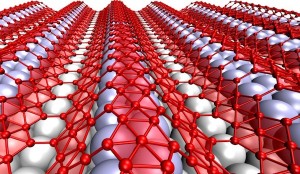Rice researchers simulate defects in popular fiber, suggest ways to improve it

The D-shaped loop, due to the misfusion of PAN-based nanoribbons, seen as a puckered-rug illustration by graduate student Nitant Gupta.
Carbon fiber, a pillar of strength in materials manufacturing for decades, isn’t as good as it could be, but there are ways to improve it, according to Rice University scientists.
They found the polymer chains that make up a common carbon fiber are prone to misalign during manufacture, a defect the researchers compared with a faulty zipper that weakens the product.
The Rice lab of theoretical physicist Boris Yakobson set out to analyze these overlooked defects and suggest how they might be curtailed. The lab’s work appears this month in Advanced Materials.
– See more at Rice News


 Though they’re touted as ideal for electronics, two-dimensional materials like graphene may be too flat and hard to stretch to serve in flexible, wearable devices. “Wavy” borophene might be better, according to Rice University scientists.
Though they’re touted as ideal for electronics, two-dimensional materials like graphene may be too flat and hard to stretch to serve in flexible, wearable devices. “Wavy” borophene might be better, according to Rice University scientists.